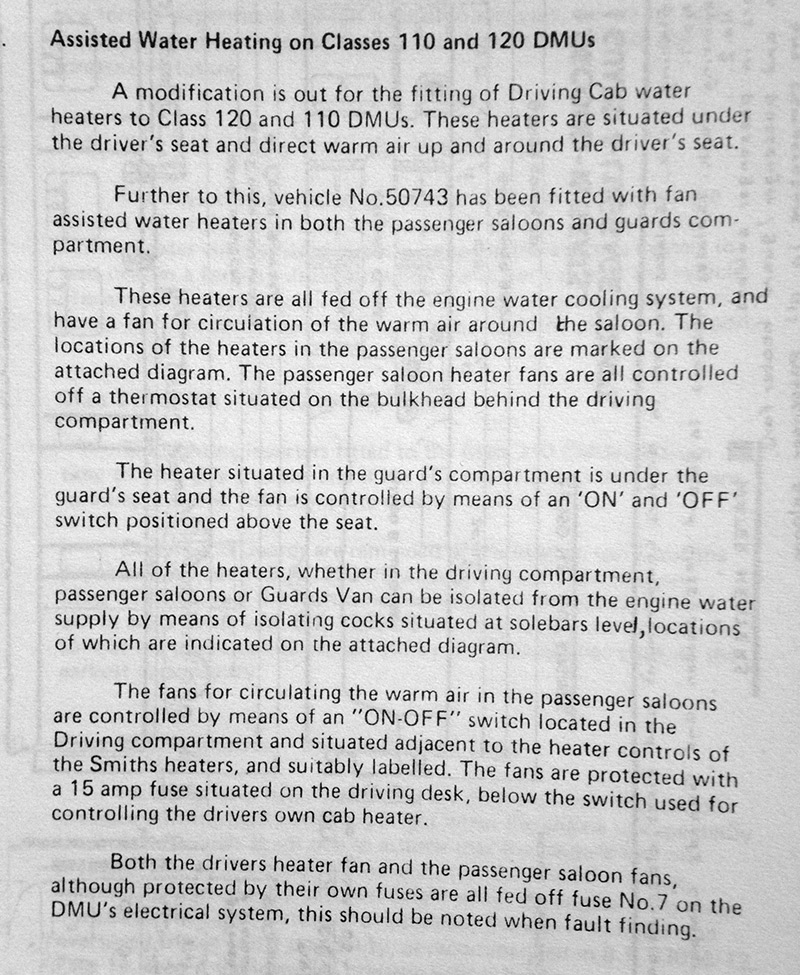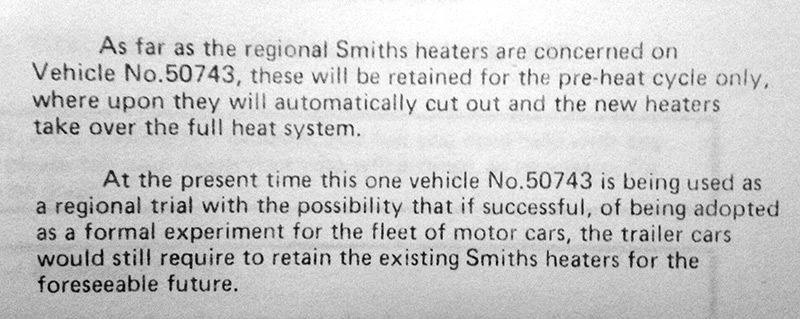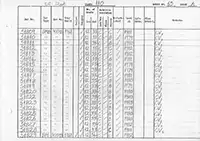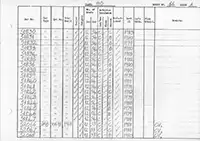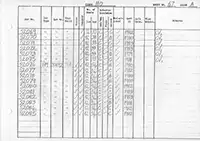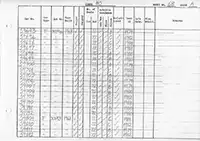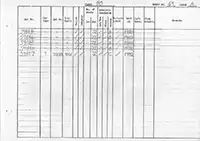Class 110 BRC&W 3-car DMUs
Problems
In the early days the sets had a few more teething problems than most, which did nothing for their popularity with maintenance staff. The most serious was their habit of catching fire, due to the poor routing of the exhausts and heater problems. The flexible exhaust manifolds, which were required because the Rolls Royce engines had the cylinder heads facing inwards, passed through a hole in one of the inside solebars, travelling along the underside to the rear of the vehicle. This section often worked loose, allowing the exhaust to blow and fill the train with fumes, or cause the whole assembly to fall apart and set fire to the underside of the vehicle. The exhausts were soon re-routed to avoid the solebars.
The heaters were also prone to filling the saloons with fumes, or catch fire caused by unburnt fuel entering the heating ducts. Hammerton St. fitters traced this to an incorrect mixture of fuel and air. The heaters were still under guarantee from Dragonair, and so a modification made which doubled the size of the holes on the heater's burner head to 1/8 in. was strictly against the rules. However, this modification to E51815 was a success and made official and all other vehicles were then altered.
51821 + 59706 + 51837
Unfortunately, before the fires were reduced, there were some casualties. The rear vehicle of the well loaded 7.31pm York - Liverpool service burst into flames when leaving Sowerby Bridge station on 13 January 1963[1]. The train was quickly cleared and the passengers managed to escape unhurt.
Three vehicles (51821 + 59706 + 51837 were withdrawn in November 1963 - were all three vehicles withdrawn because of this single incident? Several sources say they were, such as Railway Observer[2] and the Roger Harris allocation books, which also notes all three were moved to Sowerby Bridge shed until Hammerton St fitters could strip them for spares before being cut up at the shed. But a detailed article on the Class in Railway World magazine notes only one power car was destroyed in the fire, 59706 would catch fire in a separate incident a short time after at Hammerton Street depot where "the depot foreman risked his life and damaged his clothes to save the two power cars in the set by uncoupling them from the blazing trailer", and that the other power car was destroyed the same year to an unknown incident[3]. If anyone has any more information in the incident it would be greatly appreciated.
After ten years in traffic, the Class had suffered more fires than any other type. There had been 92 fires in the 60 power cars. Numerous modifications had taken place in an attempt to reduce the fire risk, particularly in the area around the exhaust system and heater ducting, where an overspill of diesel fuel from the main fuel filler pipe could saturate lagging around the ducting. These had little affect, and a serious fire on a service train in 1971 at Bescar Lane saw some more drastic action taken.
Alterations
In 1980 Lincoln depot fitted 51827/31 with an experimental hot-water heating system in place of the oil burning heaters. Water taken from the engine cooling system was fed through a single heating unit, and warmed air was passed through the existing Dragonair ducts. 52075/51841 were fitted with four independent water heaters in the saloons, each working independently. 59707 was adapted to have hot water fed from the power cars by flexible pipes on the buffer beam.
These trials couldn't have been too successful, as in 1982 the cars which still had Dragonair heaters went through a replacement programme at Doncaster which fitted Smiths heaters. These had the option if recirculating air from within the saloon, which helped heat it up and involved new air intakes being fitted beneath the seats.
A fire on Class 104 M50440 damaged the cab roof dome of Class 110 51823 standing next to it. As the vehicles passed through Doncaster afterwards, much robbing and swapping of parts occurred. The only available cab roof dome was from a Class 104, so the vehicle spent the rest of it's days with this fitted.

E51823 is seen At Leeds on 10/10/85 with the Class 104 cab roof dome. Malcolm Clements.
Here are details of one of the many modifications made to the class, detailed in a LMR Traction Bulletin:
Issue 31 - April 1981
Assisted Water Heating on Classes 110 and 120 DMUs
Asbestos Removal
The vehicles were built with blue asbestos on the walls and ceilings, from the 1970s this began to be removed.
The pages below are from a vehicle log kept by the RTC at Derby dated circa 1984 which included the asbestos status for each vehicle.
The codes for the asbestos columns are: / not built with blue asbestos; B - blue asbestos; and C - removed. In the remarks column CV means corridor van (cage fitted).
References
- ⋏ p87 March 1963 Railway Observer
- ⋏ p107 April 1965 Railway Observer
- ⋏ "The Calder Valley DMUs", Stephen Chapman, p344 July 1985 Railway World
The Railway Observer is the journal of the Railway Correspondence and Travel Society
Summary
Description
Interior
Problems and Alterations
Diagrams & Works Photos
Numbering & Driving Instructions
Liveries
Refurbishment
Operations
Accidents
Non-Passenger Use
Images
Details about preserved Class 110s can be found here.



